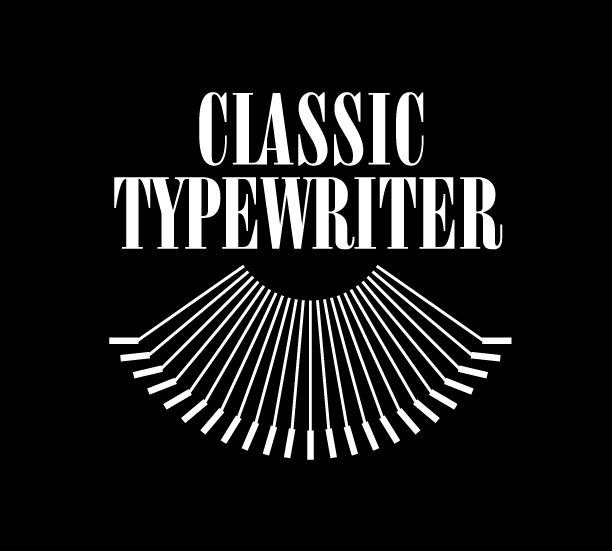A History of the Olivetti Studio 44 Typewriter
The Olivetti Studio 44 typewriter is an emblem of mid-20th-century design, innovation, and craftsmanship. Launched in 1952 by the Italian manufacturer Olivetti, the Studio 44 is renowned for its robust build, sophisticated aesthetics, and smooth typing action. As part of the Olivetti typewriter family, it stood out as a reliable and versatile "portable" typewriter that appealed to writers, journalists, and professionals alike. It also holds an important place in the evolution of Olivetti's legendary designs, serving as a bridge between earlier heavy machines and later, more portable icons like the Lettera 22 and Lettera 32.
The Olivetti Legacy: Art Meets Functionality
Founded in 1908 in Ivrea, Italy, Olivetti was one of the first companies to integrate industrial design into its product development. Under Adriano Olivetti's leadership, the company became synonymous with elegant engineering and aesthetic modernism. Renowned designers such as Marcello Nizzoli, Giovanni Pintori, and later Ettore Sottsass, helped shape Olivetti's identity, merging technology and art in ways few companies could rival.
Design and Features of the Studio 44
The Studio 44 was Olivetti's response to the growing need for a portable typewriter that maintained the functionality and sturdiness of a desktop machine. While portable by the standards of its time, the Studio 44 was heavier than its contemporaries, weighing around 17 pounds, making it more suited for writers who valued performance over ultra-lightweight portability.
Key Features:
A full-sized keyboard with responsive, quiet keys, making it ideal for writers who typed for long hours.
All-metal construction for durability and long-term reliability.
Variable line spacing and a ribbon selector for red and black ink, offering flexibility to users.
Foldable paper support arms, enhancing its portability.
Olivetti's hallmark sleek and minimalist design, with rounded edges and a matte finish.
Its sturdy mechanics and smooth typing action won the hearts of countless writers and professionals.
Writers Who Used the Studio 44
The Studio 44 became a favorite of several notable figures in the literary world, particularly during the 1950s and 1960s. Its reliability and elegant design made it a trusted companion for those who valued the craft of writing.
Tennessee Williams – The celebrated playwright used an Olivetti Studio 44 for many of his works, including drafts of his later plays. Williams valued the machine for its quiet operation and comfortable keyboard, which allowed him to focus on his writing.
Leonard Cohen – While primarily associated with the Lettera 22, Cohen was also known to use the Studio 44 at various points in his career. The machine’s durability made it a practical choice for extensive typing sessions.
Philip Roth – The acclaimed novelist reportedly used a Studio 44 during his early years. Roth’s precise prose required a machine that could keep up with his productivity and exacting standards.
The Studio 44's Relationship to the Lettera 22 and Lettera 32
The Studio 44 played an important role in Olivetti's typewriter evolution, paving the way for the development of lighter and more portable machines like the Lettera 22 (1949) and its successor, the Lettera 32 (1963).
Lettera 22: This earlier model, designed by Marcello Nizzoli, was smaller and lighter than the Studio 44, marking Olivetti’s move toward true portability. It became one of the most iconic portable typewriters of all time, widely used by journalists and travelers.
Lettera 32: Released over a decade after the Studio 44, the Lettera 32 built on the Lettera 22’s success by adding new features and a slightly more modern design. It became the go-to typewriter for many writers, including Cormac McCarthy, who wrote much of his work on one.
The Studio 44, despite being heavier, bridged the gap between desktop and portable typewriters. It maintained a full-sized typing experience that more compact machines like the Lettera 22 and 32 sometimes lacked. Many users appreciated the Studio 44 for its professional feel, making it a preferred choice for writers who wanted portability without sacrificing the tactile satisfaction of a desktop machine.
Cultural and Design Legacy
The Studio 44 is more than just a typewriter; it is a reflection of Olivetti’s dedication to art and engineering. The machine represents a time when writing was an intentional act, requiring thought, precision, and a physical connection to words. Its association with literary giants and its place in the Olivetti typewriter lineage have made it a prized collectible among enthusiasts today.
Though production of the Studio 44 eventually ceased in the 1960s as lighter and more advanced models gained popularity, its legacy endures. The machine continues to inspire a sense of nostalgia for an era when the tools of writing were as enduring and beautiful as the words they produced.
For typewriter aficionados, the Olivetti Studio 44 stands as a timeless piece of functional art—a testament to the golden age of typewriting and the enduring charm of Italian design.

